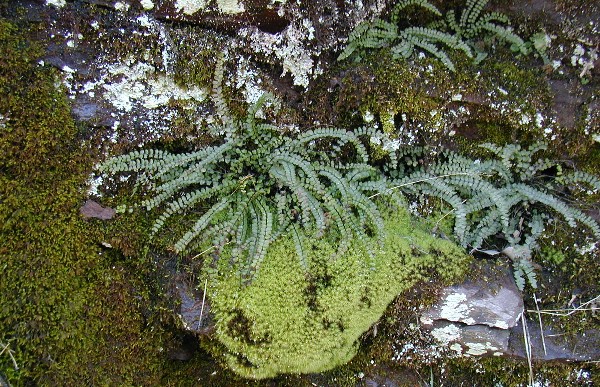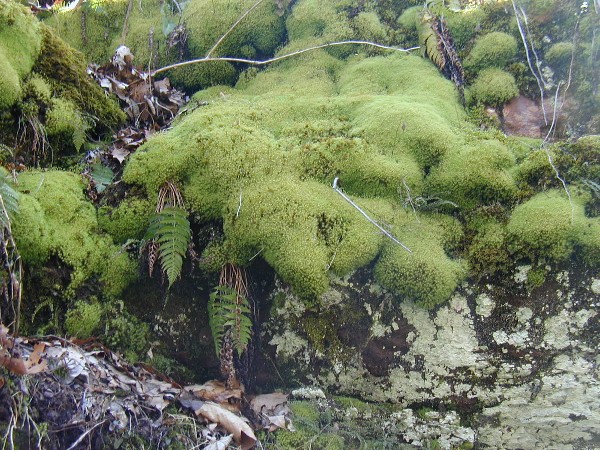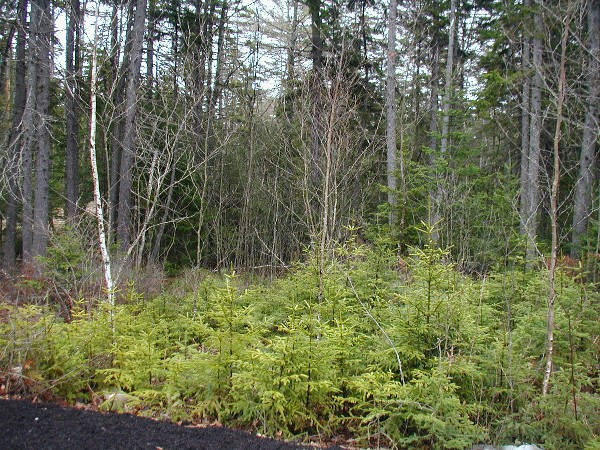
My journey north to Boothbay, Maine brought me to Coastal Maine Botanical Gardens. Sure to become a premier destination for the garden-minded, there is already much to enjoy. It is a very young botanical garden. By one measurement it all began with the idea for a botanic garden located in the mid-coastal region of Maine in 1991. The concept gained the first step towards reality with the purchase of 128 acres of stunningly beautiful, natural landscape in the coastal community of Boothbay in 1996. The site has dramatic topography with natural cliffs and ravines, rock outcrops, conifer forests, more than 300 native species of plants including ferns, mosses, and lichens. There are two spring-fed fresh water ponds and a vernal pool, a small wetland area with diverse botanical possibilities, and two-thirds of a mile of tidal waterfront on the Back River that validate the gardens Coastal Maine name.


In concept, the primary functions of are education, research and stewardship. Five separate areas of use were determined. A campus area for an education and reception center where formal gardens and those requiring the highest maintenance would be located. Next, an area of broad trails bordered by informal gardens with seating that complements the landscape. Additionally, there would be trails through areas typical of the Maine woods and shoreline. An area of unaltered landscape including a walkway over wetland. Lastly, the necessary infrastructure of roadways, provide parking areas, and a maintenance building. Today there are two miles of walks, trails, and drives providing access to the gardens and the natural areas. The wide roadways allow a leisurely stroll for groups as well as individuals. They gently wind across the terrain, leading out from the just completed 9,500 sq. ft. shingle style visitor and education center, complete with library and cafe, and a gift shop. The handsome building is surrounded by ornamental display gardens on a 5 acre main campus. Discretely concealed parking areas keep vehicles unobtrusively out of sight.
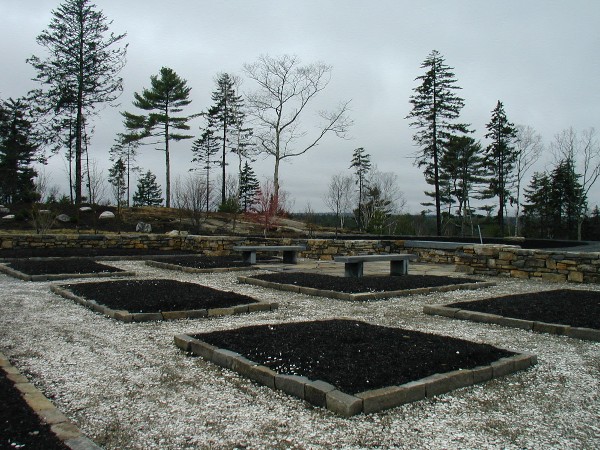
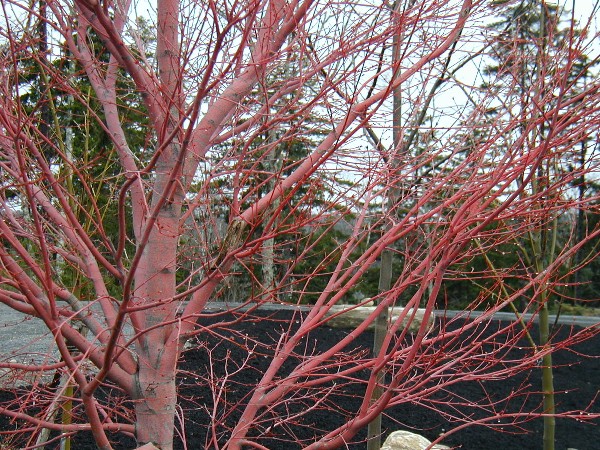
.
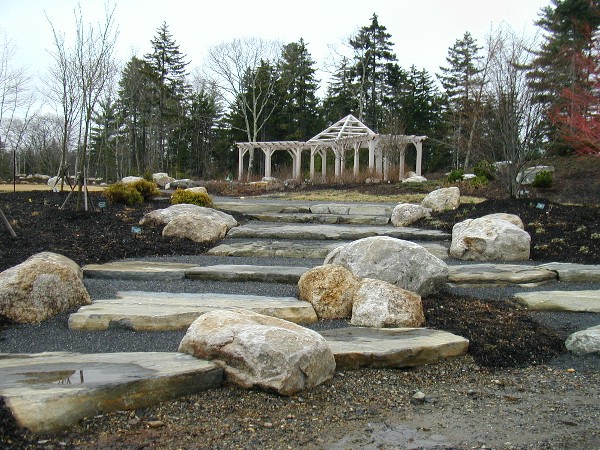
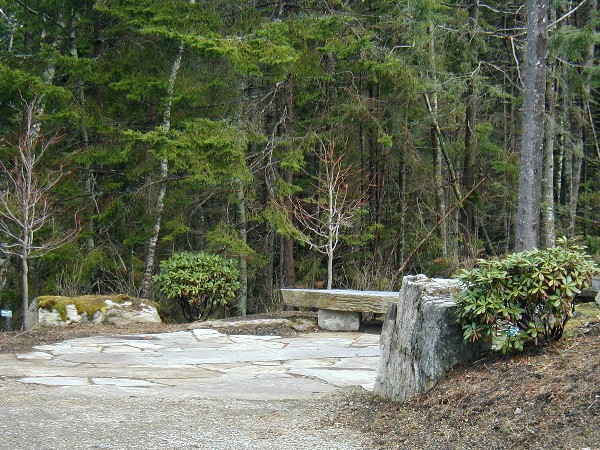

.

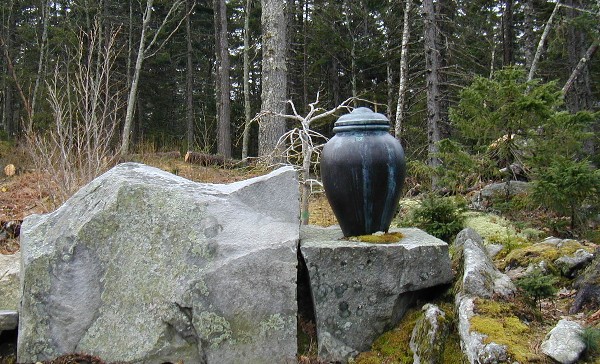
.
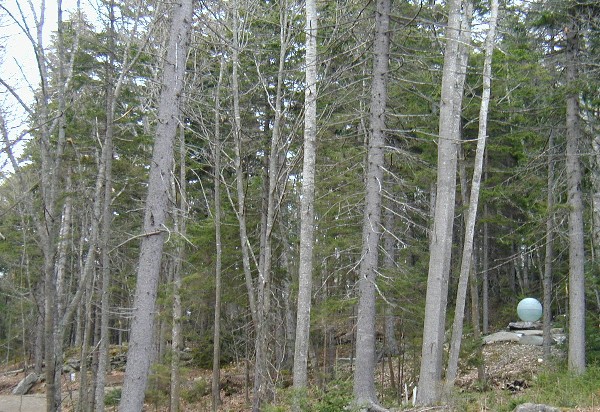
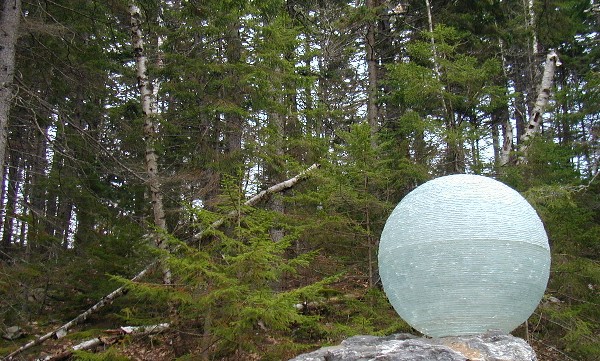
.
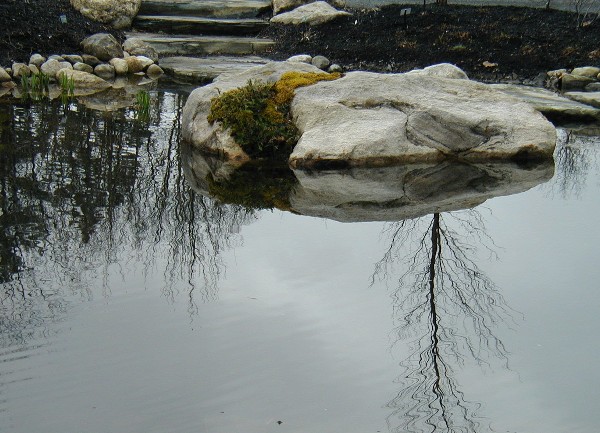
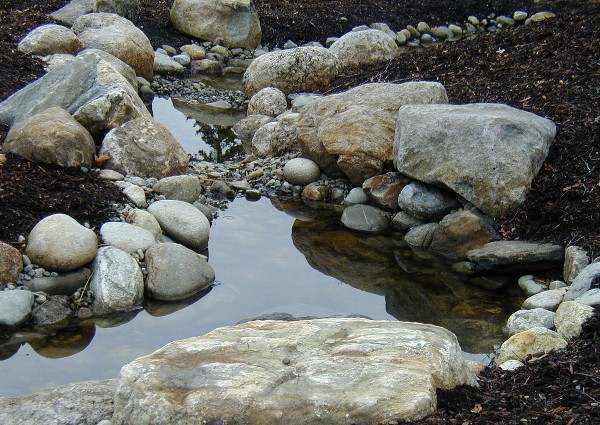
.
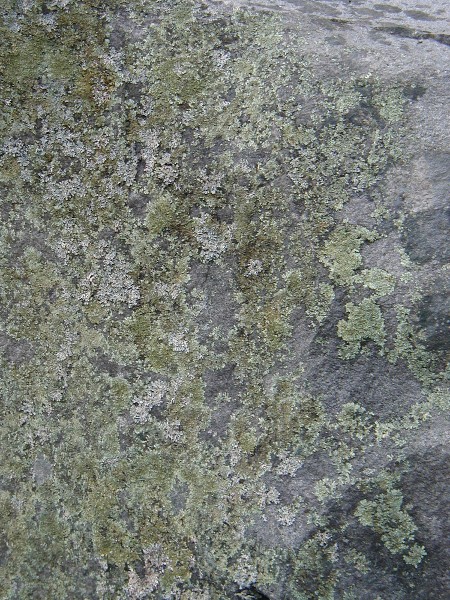


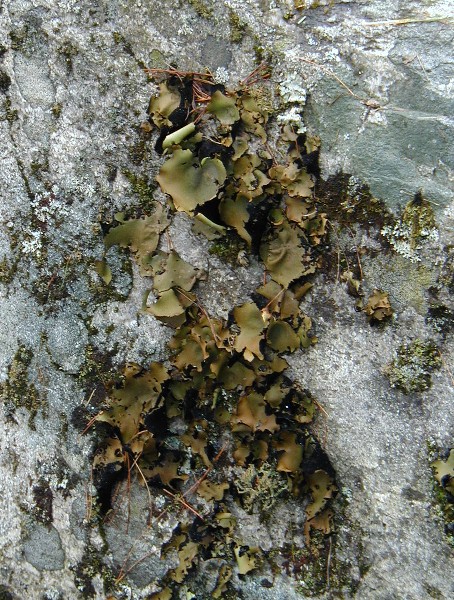
.
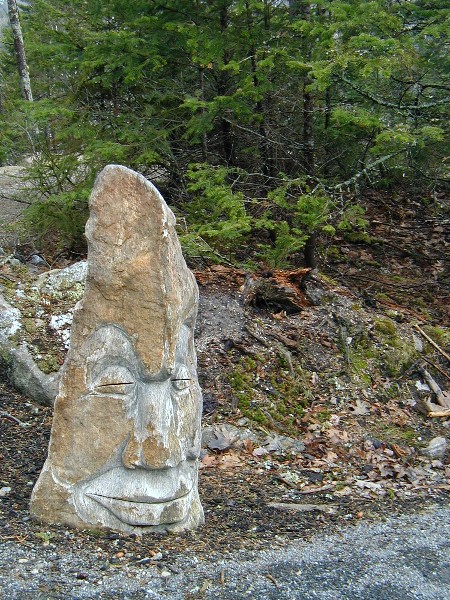
.
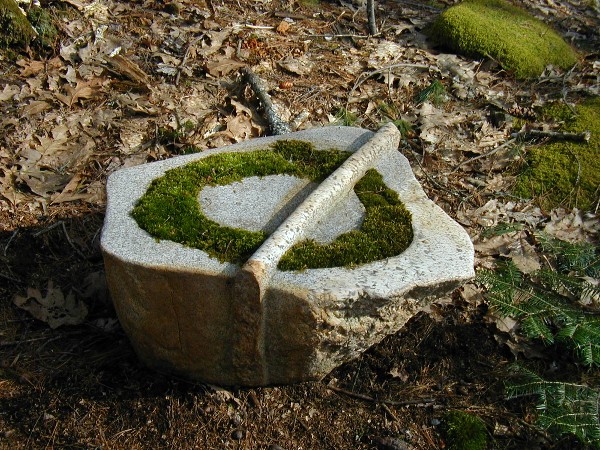
In 2005 the Radcliff Family Trust donated 120 undeveloped acres to the gardens, extending the shoreline to 4500 feet. This makes the Coastal Maine Botanical Gardens, at 248 acres, one of the largest botanical gardens in the United States. CMBG is growing not just in size, but through the careful design, planning and planting that is taking place. The fourth dimension, that of time, slowly takes it day by day into the future. I hope to visit again, and again, and again, to see it grow.
What's an Auricula, and why does it have a theater? Auriculas are primroses, a special type with extraordinary flowers. Native to the Alps, Carpathian, and Apennine mountains, Primula auricula hybridizes with other species to create an immense complex of Show Auricula primroses in a rich array of jewel-tone colors. The leaves (and sometimes the flowers) of auricula primroses are often dusted with a meal-like farina that is disturbed by any accidental contact with a finger or a raindrop.
An Auricula Theater is a specialized, tiered stand for the outdoor garden, where potted primroses are placed on display. Dating back to the 17th century in France and Belgium, the earliest versions were simple open-fronted boxes that protected the flowers from rain and wind. By the 19th century, in England, these had become quite elaborate, grand stages with faux-painted curtains and proscenium arches.
There's always an art exhibit in Glyndor House at Wave Hill. Sometimes it spills over into the garden. Multiple artists present. These are usually younger artists. Some pieces appeal strongly to me. Others are "nice." And some have me walking around like a stiff-legged cat, wondering just what it is I am missing, because I can make neither head nor tail of the piece. Which is what truely makes a great exhibit. Wouldn't it be sad if it was all a mediocre, inoffensive pastiche. Better to stir the viewer up and make them think about what's on display.
The current exhibition, Emily Dickinson Rendered features the work of ten different artists who immersed themselves in the poet's live and writings, to create works of art inspired by her relationship with nature.
Multiple works by Merideth McNeal are incorporated in Beside Your Shimmering Doorway, an installation placed in the western, river-facing side of the gallery that creates a portrait of Emily Dickinson through reference to her love of gardening. It is evoked by period seed catalogues on the same table as a pair of paper gloves imbedded with pressed plants, acknowledging Dickinson's youthful herbarium.
McNeal also created several Victorian-inspired silhouettes, using period wallpaper as a background for black velvet silhouette images placed in a loose chronology, from childhood cradle to the bureau where she stored her poems.
Valerie Hammond explores the mysteries surrounding Emily Dickinson's life and self-imposed isolation in five pieces. Two, Séance and Traveler use ink, graphite, color pencil, and wax on paper, in which Hammond takes the shapes of vines, leaves, ferns evocatively placed to create gestural outlines that conjure.s up the poet's form and memory.
There will be two more exhibitions in the 2007 season at Wave Hill, continuing the exploration of 19th century American writing about nature, visualized through the lens of contemporary art. This summer, from June 7 through August 26 it will be Thoreau Reconsidered. In the autumn, from September 8 through December 2, the focus will be on the writings of Edger Allen Poe and Mark Twain. For more details, visit Art at Wave Hill.
By dint of organization (slides selected and in carousel on Tuesday evening, clothes chosen and packed on Wednesday evening) I was free to take a day in which to visit gardens. The weather was cooperative - not sunny but more importantly, not raining. Merely overcast with an occasional gust of wind to remind me it was still early days. On the road by mid-morning, and Wave Hill for my first stop. I wanted to see how plants in this sheltered garden were responding to our first substantial week of mild weather.
Lunch on the terrace was an option. Breaks in the clouds offered an occasional spill of sunshine. While the dining tent is in place, I opted to take my luncheon salad of mixed greens, blue cheese, grilled pear slices, and candied walnuts over to a table at the terrace edge. A hazelnut latte (with whipped cream) was I freely admit, a delicious indulgence.
A nor'easter, they said, typically a winter storm but this huge low pressure system crawling up the coast from Virginia to New England was happening in mid-April. At least here at BelleWood Gardens that meant rain rather than snow. Fortunate, since an inch of rain is 10 inches of snow. Saturday dawned sunny, clouded over, rain overnight. Heavy rain.
It rained overnight, heavy at times and we were sure that on Monday there'd be more sweeping, squeegee-ing, etc. in the morning. Yet, even though there was a further 1.4 inches in the rain gauge when I checked at 7:30 a.m., except in the corners the basement was dry.
An hour later when I went out to take these pictures the landscape offered a different, sodden, story.
The back room at Global Ag in Clinton, New Jersey is full of peeps. Not the marshmallow fluff Easter version. Rather, all sorts of chick-a-biddies: Rhode Island Red, Australorp, Barred Plymouth Rock, Brahmas, Araucana (the so-called Easter egg chickens because their egg shells are soft turquoise blue or pale green) and other breeds. While they are very appealing right now, chicks quickly turn into gawky adolescents, with quilled feathers poking out of the fluff, "chick dust" wafting about, and big feet that they try to grow into. Better yet, these are all pre-sold. Though Paul once designed and built The Chicken Hilton (room rates one egg per day) for me, I don't know that he's currently interested in another smallholder venture.
Jim Thornton of Conyers, Georgia is especially fond of azaleas, and at this time of year his garden is filled with early azaleas in full, magnificent bloom.
The traditional advice is to "cut and dab" to get rid of horse briar. Jim cut the thorny vines and dabbled herbicide on the wound, but with less than effective results. He tried everything: he pulled, dug, cut, dabbed, and painted with weed killer, even swore and tried a little voodoo, but nothing worked. The nasty, thorny, smilax was, as Jim put it, a "thorn in my side" for many years. Besides, he says, he's getting to old to crawl around under 6 to 7 foot tall azaleas. He came up with the following technique three years ago, and has been using it ever since.
He wrote up the results in an article which appeared in The Azalean, Volume 29 Number 1, Spring 2007, publication of the Azalea Society of America. Jim has graciously given me permission to share the information here.
Get some floral water pick, those tubes with a soft plastic cap used by florists for individual cut flowers. Jim bought a pack of a dozen tubes for about one dollar at a hobby store. I posted a "want" on freecycle and got 14 tubes from one woman and 35 from another. Since the vials are transparent or pale green in color, Jim spray paints them hot pink to keep them from getting lost in the garden.
Jim first used Round-Up® but now prefers Spectracide® Brush Killer. Fill the pick with undiluted herbicide. Only fill each pick about half-way to two-thirds full. Jim uses an old syringe from a refill kit for a printer ink cartridge but suggested that a meat / poultry injector will also work.
He begins treatment in late spring and continues through late fall. Find an invasive vine of about matchstick diameter and long enough to bend to the ground. Strip off any leaves or thorns. Cut the vine, and insert the cut portion that is still attached to the plant into the cap, making sure the cut end is down in the herbicide and that the vine is bent downward.
Jim has used this technique on horse briar, also honeysuckle, blackberry, kudzu, and Virginia creeper. He notes that it is not as effective on wild grape, as they apparently exude so much sap that the herbicide is forced out of the vial. I asked about multiflora roses and poison ivy. Jim said that, "As far as treating [multiflora]roses, shouldn't be any problem. They can't be any tougher than smilax! I have treated poison ivy with good results. I wear latex gloves and long sleeve shirts. I understand that, even though the vine is dead it is still toxic, so dispose of it accordingly."
Kudos, Jim, and thank you so much for sharing this clever, innovative method of coping with invasive vines.
COMMENT: Jerry said:That water pic idea gave me a good hope of trying it on the bindweed that has been driving us silly the past few years. I found the pics on the internet for very little money but the shipping was three times the cost of the product. I checked at Flemington Floral and they sold them to me for a dollar and change for two dozen. I can't wait for those miserable bindweeds to put their noses out of the ground.
It has been raining, and moss growing on the creekside cliffs is sopping up the moisture. In the gray light of an overcast day it glows with a verdant liveliness. Green is a color often given short shrift: leaves are green, grass is green, it's chlorophyll and now let's move on to the rainbow hues of flowers.
Instead, let's linger on green for a while. Green, according to Webster's Encyclopedic Unabridged Dictionary, is firstly "1. of the color of growing foliage, between yellow and blue in the spectrum." Chartreuse then came to mind, and that color was secondarily defined as "2. a clear light green with a yellowish tinge." But there is also Pea green, which is defined as "a medium or yellowish green." Glaucous is "1. light bluish green or greenish blue. 2, Bot. covered with a whitish bloom, as a plum."
There are words relating to green: Verdant "green with vegetation; covered with growing plants or grass: a verdant oasis." Secondarily, "2. of the color green: a verdant lawn." How about Viridescent "sightly green; greenish: a viridescent wall, tinged with moss."
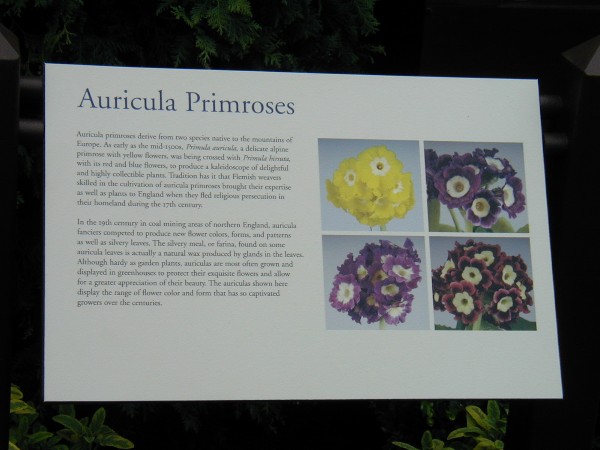
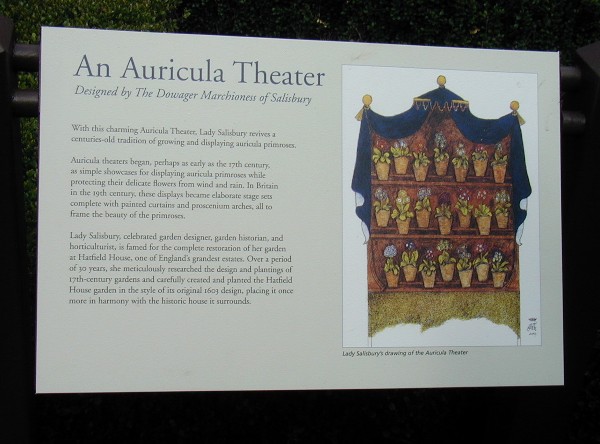
was created by Christianson Lee Studios and is based on sketches
by the Dowager Marchioness of Salisbury.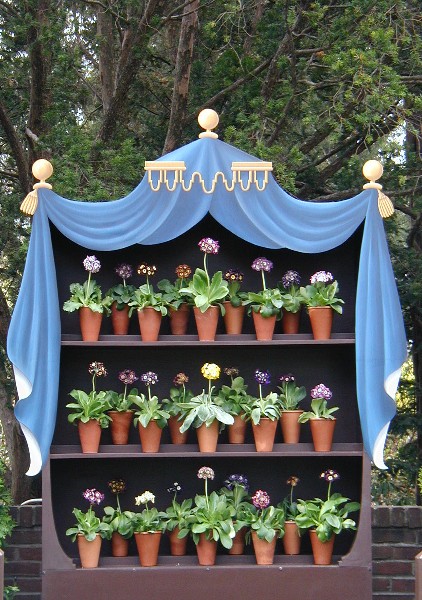
You can learn more about auriculas at the National Auricula Society, Midland & West Section web site. 
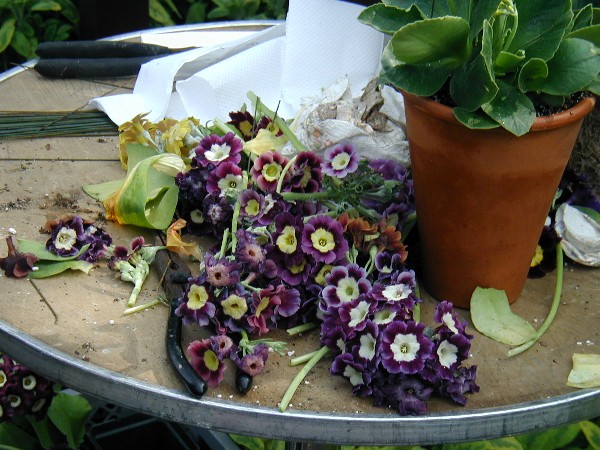
anything that detracts from the perfect appearance of the plant is removed and discarded.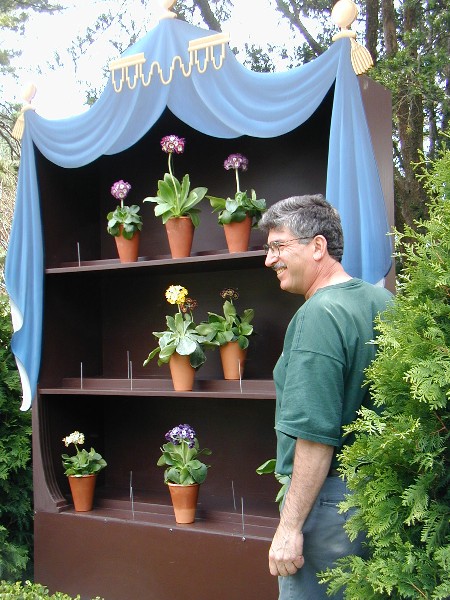
Each pot is carefully wiped clean of any dirt and debris before being set into place.
Each individual pot is held securely in place by a slim metal pin
through the drainage hole and fastened to the shelf.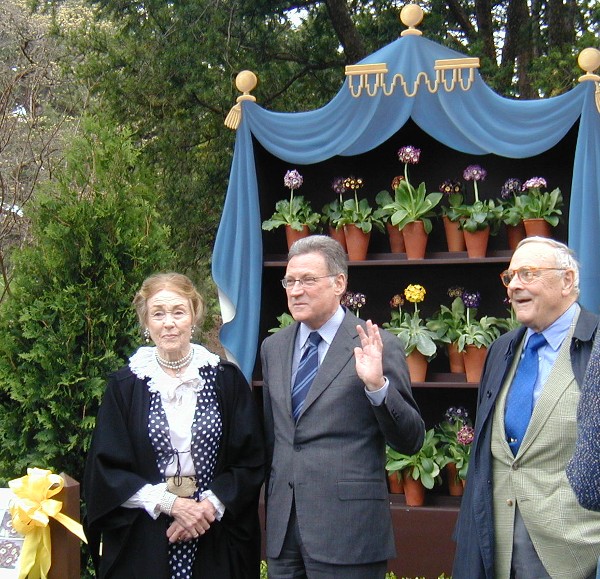
Gregory Long, president of the New York Botanical Garden, waves to the audience.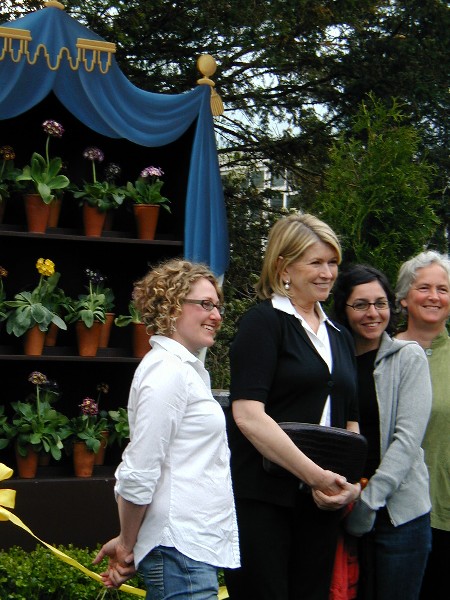
located amid the herbs and flowers of the Nancy Bryan Luce Herb Garden,
will be on display through May 13th.
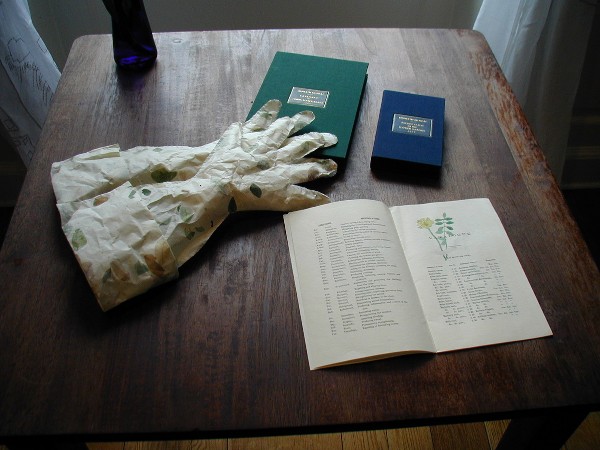


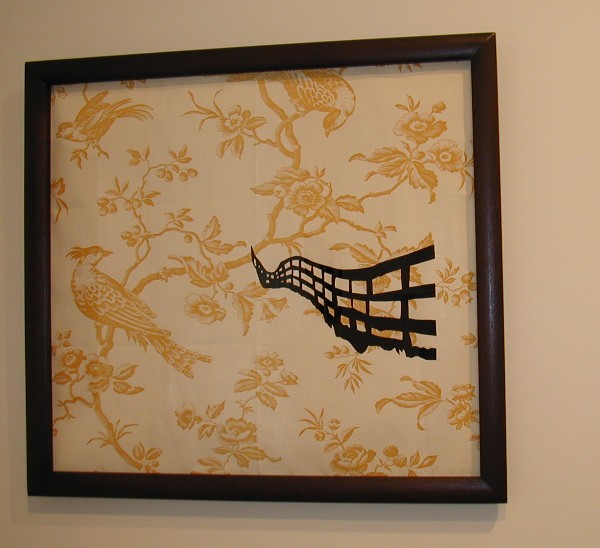
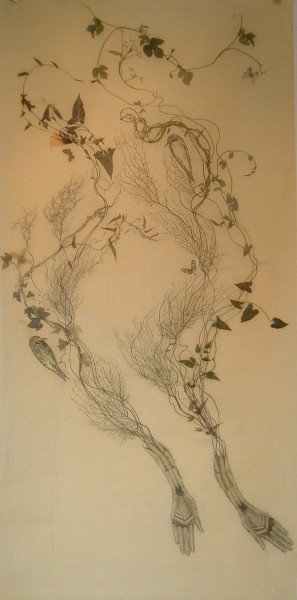

accompanied by the billowing branches of a cherry.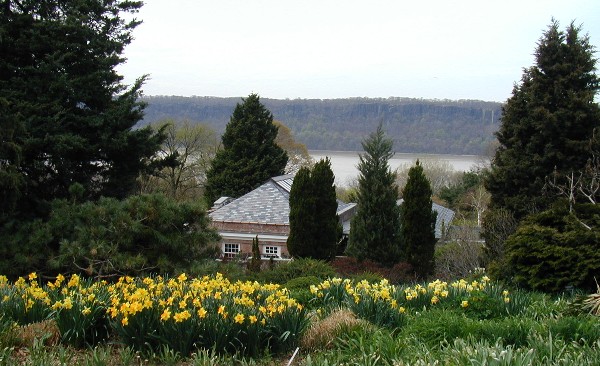
sunny against dark conifers and the waters of the Hudson River.
Simply put, they're hurling themselves into bloom.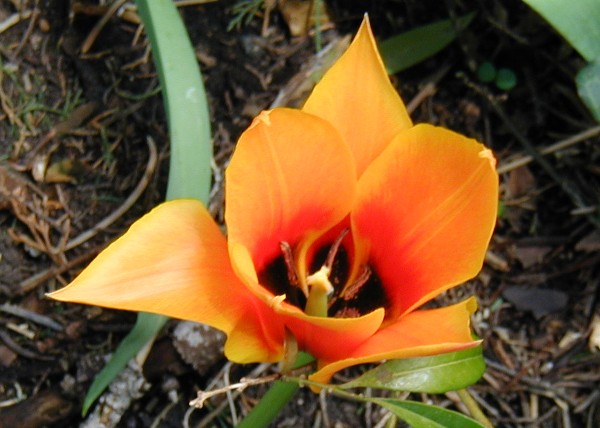

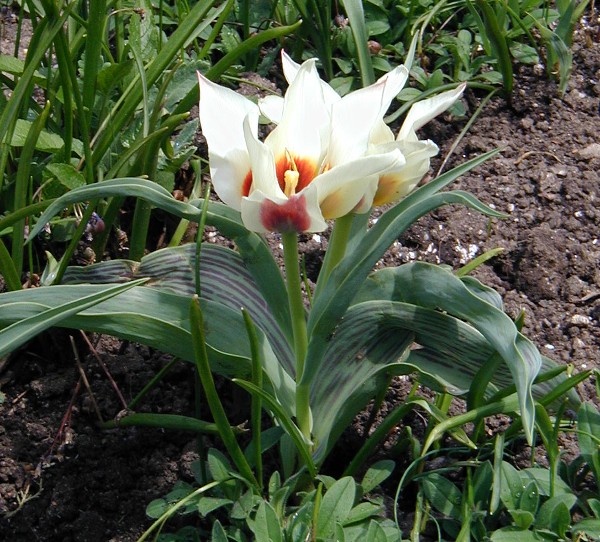
this greigii cultivar sports red-blotched white petals.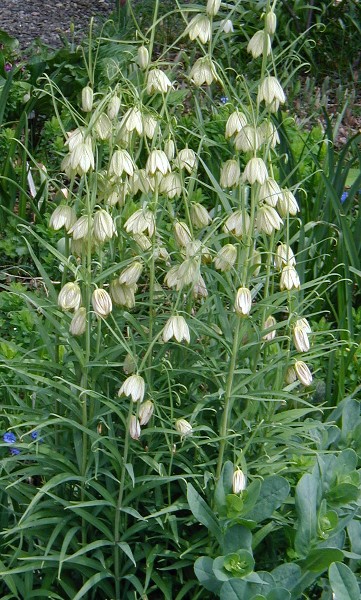
of Fritillaria verticillata display their silent bells of pale greenish white.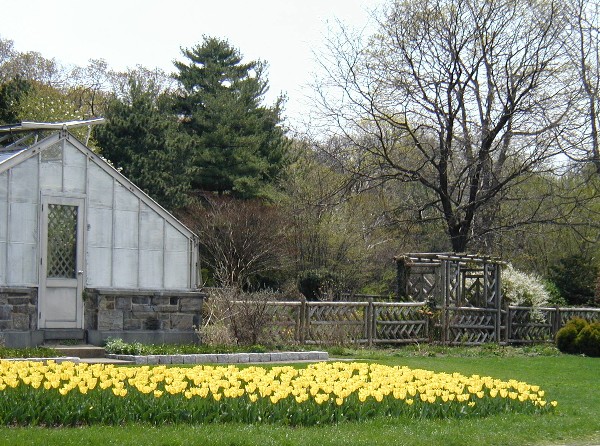
with a golden treasure trove of tulips.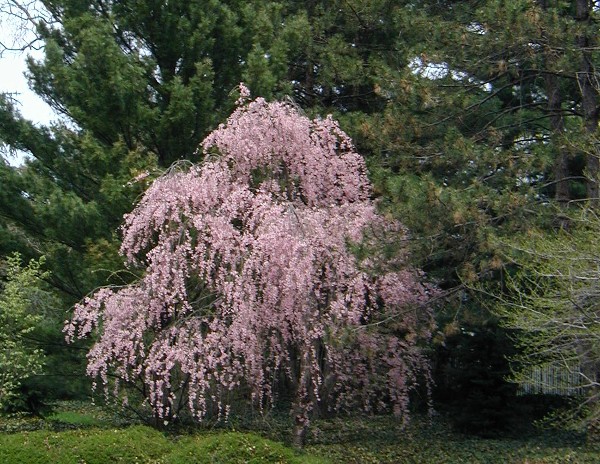

One of the earlier yellow magnolias, it remains a desirable cultivar for the discerning gardener.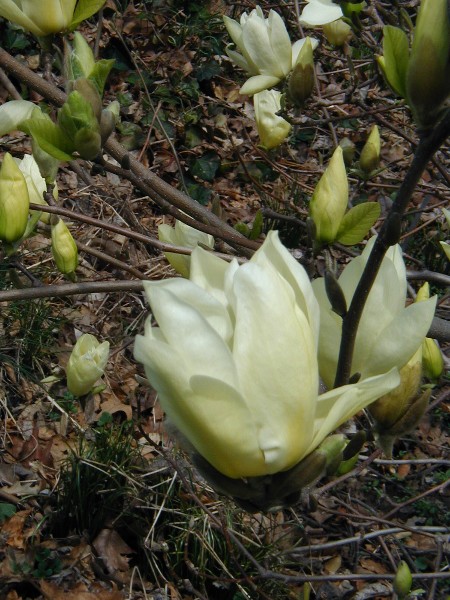
reveals the warm, old ivory glow of the substantial flower.
There was 1.65 inches in the gauge by 8:00 a.m. on Sunday.
I checked again at 1:00 p.m., and there was an additional 1.25 inches in the gauge.
The same again, another 1.25 inches in the gauge at 4:45 p.m. and there was some water in the basement.
More water in the basement by 9:00 p.m. and yet another 1.25 inches in the gauge.
We swept water out the basement door, and used Paul's shop vac when the sump pump overheated, managing to more-or-less keep up with the water.
At 10:30 p.m. we called it a night. The basement was now merely damp. The rain gauge had .45 inches, for a total of 5.85 inches in approximately 24 hours.
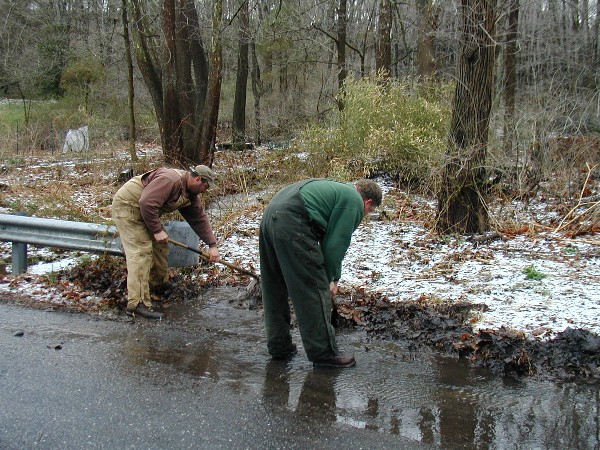
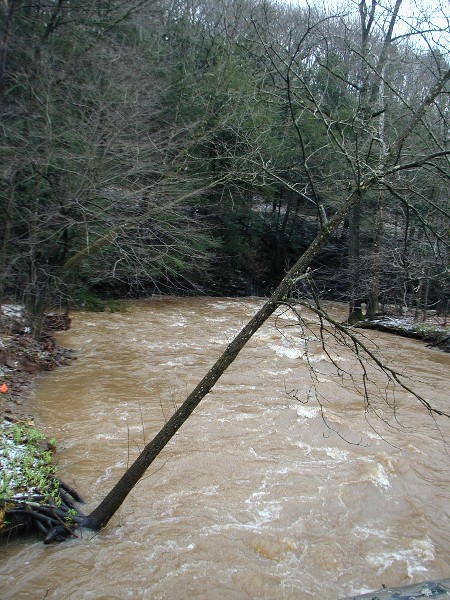
That little tree looks like its roots are losing their grip.
at such a rate that the culvert cannot handle it.
Some of the water eddies and deepens between the culvert and the bank,
then must flow backwards to reach the opening
because a layer of icy snow / sleet coated the ground.
Lenten rose, Helleborus ×orientalis, is looking good.
look warmer, a creamy, old ivory white.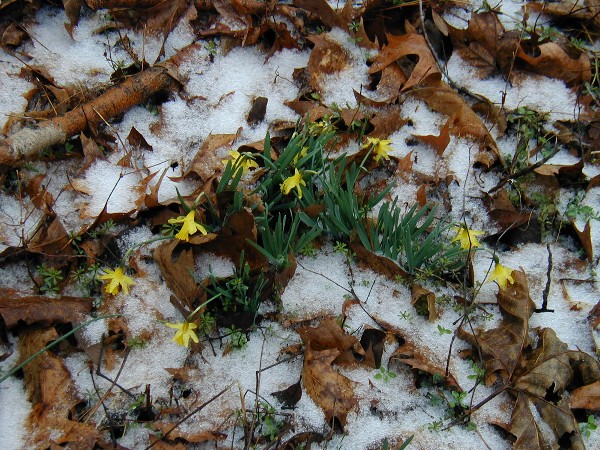
bow before the icy, wintry weight.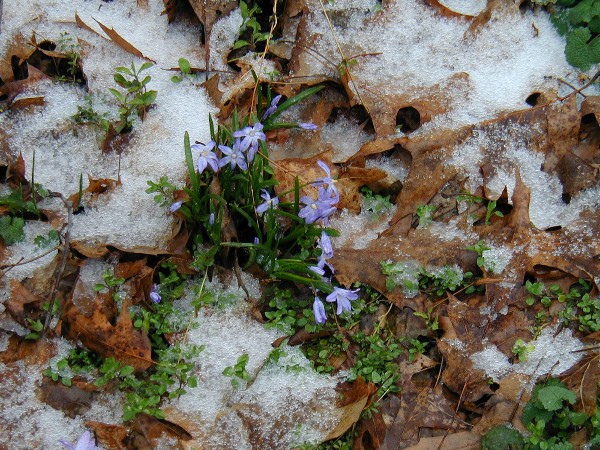
Glory of the snow.
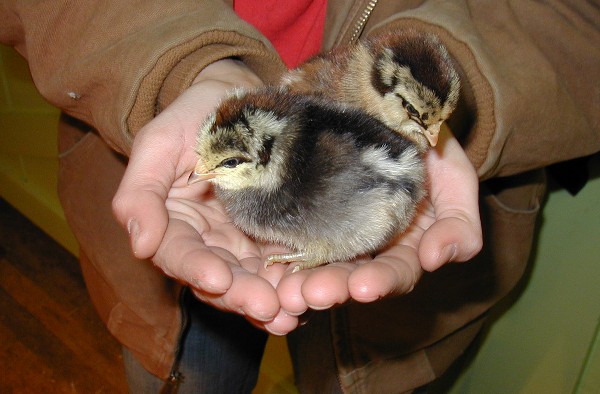
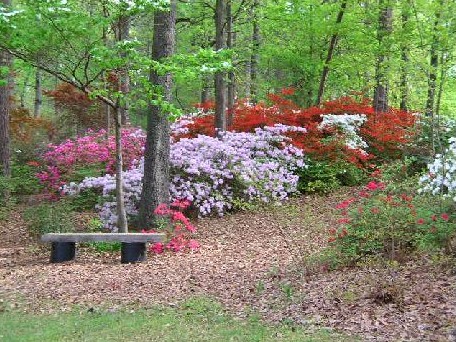
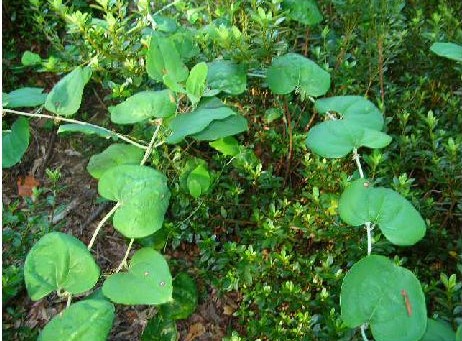

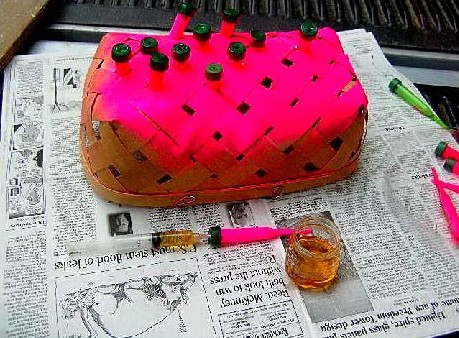

No muss, no fuss, and no herbicide accidentally drifting around to where you don't want it.
It is a perfect point-of-use application technique.

